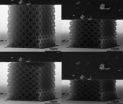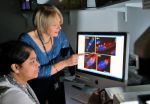(Press-News.org) One in six cancer patients enroll in hospice only during their last three days of life, according to a new study from a team from the Perelman School of Medicine at the University of Pennsylvania. Their findings, published online last month in the Journal of Clinical Oncology (JCO) also reveal a profile of patients who may be most at risk of these late admissions.
"Waiting until the final days of life to begin hospice can shortchange patients and their families – skipping over many benefits of hospice care and limiting the opportunity to improve patients' quality of life during this stressful time," said study co-author David Casarett, MD, a professor of Medicine and director of Hospice and Palliative care at Penn Medicine. "Our findings point to some reasons why patients may seek hospice care so late in the course of their illness, which we hope will enable us to improve transitions to hospice at a more beneficial point in their care."
The team examined de-identified data from electronic medical records of 64,264 patients in 12 hospices in the Coalition of Hospices Organized to Investigate Comparative Effectiveness network from January 2008 to May 2013. Hospices spanned 11 states, including Pennsylvania, with censuses ranging from 400 to 1,700 patients per day. Of those 64,264 patients, 10,460 had a hospice stay of 3 days or fewer.
The study found several characteristics associated with hospice length of stay of three days or less, including being male, married, younger than 65, and of nonwhite ethnicity. Also, patients with blood cancers and liver cancer were more often than those of oral cancer to be among those admitted within the last three days of life.
Findings indicated that Medicaid and uninsured patients who enrolled in hospice typically did so earlier in the course of their illness than those with commercial insurance or Medicare. The researchers suggest these patterns illustrate which patients may be less able to afford out-of-pocket expenses associated with prolonged aggressive or experimental treatment, or that they may receive care in oncology practices that differ in their aggressiveness of care.
Previous studies found that patients with blood cancers enter hospice less often, overall, than other cancer patients, but this study also examined timing of entry and found those with blood cancers entered hospice later than other cancer patients. The authors theorize this may be due to a dependence on blood products, as hospice typically does not cover blood transfusions, or pursuit of bone marrow or stem cell transplants late in the disease course, which can delay hospice. Also, those with blood cancers – especially patients who've undergone bone marrow transplants and are susceptible to life-threatening infections -- may have a more abrupt decline towards end of life than those with other cancers.
The researchers say the marriage association may be because marriage can provide caregiving structure – such as help with transportation to medical appointments and assistance with medication -- and emotional support and motivation to support continued treatment. And, they note, some married patients may prolong treatment for their spouse's sake.
This study comes amid the National Quality Forum and the American Society for Clinical Oncology's joint endorsement of quality measures for end of life care in cancer patients. Eventually, oncology practices and health systems may be measured and reimbursed in part on their percentage of patients who enroll near the end of life and be linked to pay-for-performance initiatives.
With further study, the Penn researchers suggest that these findings could aid in identifying at-risk patient populations for targeted interventions promoting earlier hospice discussions.
"It is essential to optimize transitions to hospice and make it easier for patients and their loved ones to access this care," said the study's lead author, Nina R. O'Connor, MD, assistant professor of clinical medicine. "Better integration of palliative care into cancer treatment – even that which is provided with curative intent – is one strategy that may be helpful. By helping patients to access care that improves their quality of life along the spectrum of their illness, we are able to create a more natural pathway to hospice care when and if that option becomes appropriate."
INFORMATION:
Rong Hu, a 2014 Perelman School of Medicine graduate, is also an author on the paper.
Penn medicine study reveals profile of patients most likely to delay hospice enrollment
Findings may influence national quality assessment programs and improve transitions from active treatment to hospice care sooner
2014-09-11
ELSE PRESS RELEASES FROM THIS DATE:
Study maps 15 years of carbon dioxide emissions on Earth
2014-09-11
TEMPE, Ariz. – World leaders face multiple barriers in their efforts to reach agreement on greenhouse gas emission policies. And, according to Arizona State University researchers, without globally consistent, independent emissions assessments, climate agreements will remain burdened by errors, self-reporting, and the inability to verify emissions progress.
Now, an international research team led by ASU scientists has developed a new approach to estimate CO2 emissions from burning fossil fuels — one that provides crucial information to policymakers. Called the "Fossil ...
Dartmouth research links genetic mutation and melanoma progression
2014-09-11
Dartmouth researchers have found that the genetic mutation BRAFV600E, frequently found in metastatic melanoma, not only secretes a protein that promotes the growth of melanoma tumor cells, but can also modify the network of normal cells around the tumor to support the disease's progression. Targeting this mutation with Vemurafenib reduces this interaction, and suggests possible new treatment options for melanoma therapy. They report on their findings in "BRAFV600E melanoma cells secrete factors that activate stromal fibroblasts and enhance tumourigenicity," which was recently ...
Ceramics don't have to be brittle
2014-09-11
Imagine a balloon that could float without using any lighter-than-air gas. Instead, it could simply have all of its air sucked out while maintaining its filled shape. Such a vacuum balloon, which could help ease the world's current shortage of helium, can only be made if a new material existed that was strong enough to sustain the pressure generated by forcing out all that air while still being lightweight and flexible.
Caltech materials scientist Julia Greer and her colleagues are on the path to developing such a material and many others that possess unheard-of combinations ...
Scientists report first semiaquatic dinosaur, Spinosaurus
2014-09-11
WASHINGTON (Sept. 11, 2014)—Scientists today unveiled what appears to be the first truly semiaquatic dinosaur, Spinosaurus aegyptiacus. New fossils of the massive Cretaceous-era predator reveal it adapted to life in the water some 95 million years ago, providing the most compelling evidence to date of a dinosaur able to live and hunt in an aquatic environment. The fossils also indicate that Spinosaurus was the largest known predatory dinosaur to roam the Earth, measuring more than 9 feet longer than the world's largest Tyrannosaurus rex specimen. These findings, published ...
Malaria parasites sense and react to mosquito presence to increase transmission
2014-09-11
Many pathogens are transmitted by insect bites. The abundance of vectors (as the transmitting insects are called) depends on seasonal and other environmental fluctuations. An article published on September 11thin PLOS Pathogens demonstrates that Plasmodium parasites react to mosquitoes biting their hosts, and that the parasite responses increase transmission to the mosquito vector.
Sylvain Gandon, from the CNRS in Montpellier, France, and colleagues first studied the theoretical evolution of parasite evolution in a variable environment. Using a mathematical model, they ...
Evolutionary tools improve prospects for sustainable development
2014-09-11
Solving societal challenges in food security, emerging diseases and biodiversity loss will require evolutionary thinking in order to be effective in the long run. Inattention to this will only lead to greater challenges such as short-lived medicines and agricultural treatments, problems that may ultimately hinder sustainable development, argues a new study published online today in Science Express, led by University of California, Davis and the Center for Macroecology, Evolution and Climate at the University of Copenhagen.
For the first time, scientists have reviewed ...
Dartmouth study may shed light on molecular mechanisms of birth defects among older women
2014-09-11
Dartmouth researchers studying cell division in fruit flies have discovered a pathway that may improve understanding of molecular mistakes that cause older women to have babies with Down syndrome.
The study shows for the first time that new protein linkages occur in immature egg cells after DNA replication and that these replacement linkages are essential for these cells to maintain meiotic cohesion for long periods.
The study appears in the journal PLOS Genetics. A PDF is available on request.
As women age, so do their eggs and during a woman's thirties, the chance ...
The sound of an atom has been captured
2014-09-11
Researchers at Chalmers University of Technology are first to show the use of sound to communicate with an artificial atom. They can thereby demonstrate phenomena from quantum physics with sound taking on the role of light. The results will be published in the journal Science.
The interaction between atoms and light is well known and has been studied extensively in the field of quantum optics. However, to achieve the same kind of interaction with sound waves has been a more challenging undertaking. The Chalmers researchers have now succeeded in making acoustic waves couple ...
New genetic targets discovered in fight against muscle-wasting disease
2014-09-11
Scientists have pinpointed for the first time the genetic cause in some people of an incurable muscle-wasting disease, Emery-Dreifuss muscular dystrophy (EDMD).
The international research team led by the University of Leicester say the finding of two target genes opens the possibility of developing drugs to tackle the disease in these patients. Their work has been published today in the journal PLOS Genetics.
The research was funded by The Wellcome Trust and was only possible by the University of Leicester team collaborating with groups in Germany (University of Greifswald), ...
New species of electrons can lead to better computing
2014-09-11
In a research paper published this week in Science, the collaboration led by MIT's theory professor Leonid Levitov and Manchester's Nobel laureate Sir Andre Geim report a material in which electrons move at a controllable angle to applied fields, similar to sailboats driven diagonally to the wind.
The material is graphene – one atom-thick chicken wire made from carbon – but with a difference. It is transformed to a new so-called superlattice state by placing it on top of boron nitride, also known as `white graphite', and then aligning the crystal lattices of the two materials. ...
LAST 30 PRESS RELEASES:
Ants: An untapped resource in the development of antibiotics?
Archaeologists use AI to create prehistoric video game
Mitochondria migrate toward the cell membrane in response to high glucose levels
Tiny viral switch offers hope against drug-resistant bacteria
Most parents aware of early peanut introduction guidelines, but confused about details
HPV vaccine can protect against severe lesions of the vulva and vagina
Virtual care provision and emergency department use among children and youth
Quadrivalent HPV vaccine and high-grade vulvovaginal lesions
Insights into dry eyes gained from stem cell-derived tear glands
Researchers identify 166 human pluripotent stem cell lines available for use in clinical applications
Europa Clipper instrument uniquely observed interstellar comet 3I/ATLAS
UN University Report challenges climate change as sole trigger of Syrian Civil War, exposing governance failures in drought response
Real estate investment trust (REIT) acquisition associated with hospital closure and bankruptcy
New Raman imaging system detects subtle tumor signals
Boston Children’s receives a $7.5 million grant from Aligning Research to Impact Autism (ARIA) to provide clinical research coordination for the IMPACT Network
Spray-on antibacterial coating offers new protection for plants against disease and drought
ESMT Berlin study: What makes a first offer successful in negotiations
Groundbreaking ceremony marks the beginning of CTAO-South Array construction in Chile
Why swearing makes you stronger
What prevents more cancer patients from enrolling in potentially life-saving clinical trials?
UK’s worst-case climate risks laid bare for lawmakers
A decline in churchgoing linked to more deaths of despair
TAMEST announces Maralice Conacci-Sorrell, Ph.D., UT Southwestern Medical Center, as 2026 Mary Beth Maddox Award & Lectureship Recipient
Global study to evaluate whether dengue outbreaks can be anticipated earlier
Chonnam National University researchers propose innovative voltage-loop control for power factor correction
Accelerating next-generation drug discovery with click-based construction of PROTACs
Detecting the hidden magnetism of altermagnets
$7M gift supports health research, engineering and athletics at UT San Antonio
NU-9 halts Alzheimer’s disease in animal model before symptoms begin
Hospitals acquired by real estate investment trusts associated with greater risk of bankruptcy, closure
[Press-News.org] Penn medicine study reveals profile of patients most likely to delay hospice enrollmentFindings may influence national quality assessment programs and improve transitions from active treatment to hospice care sooner





